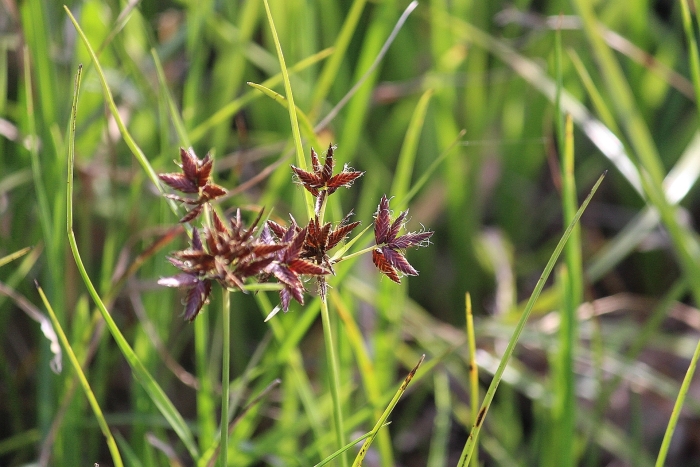Papyrus Sedge
(Cyperus mundii)
Papyrus Sedge (Cyperus mundii)
/
/

© Noeleen du Toit
CC BY-SA 4.0
Image By:
© Noeleen du Toit
Recorded By:
Copyright:
CC BY-SA 4.0
Copyright Notice:
Photo by: © Noeleen du Toit | License Type: CC BY-SA 4.0 | License URL: http://creativecommons.org/licenses/by-sa/4.0/ | Uploader: anibotani | Publisher: iNaturalist |

























Estimated Native Range
Summary
Cyperus mundii, commonly known as Papyrus Sedge or Smooth-Flatsedge, is a perennial herb native to wetlands, marshes, and riverbanks in Africa and Southern Spain. It typically grows at a moderate rate to a height of 1.5-2.5 feet (0.46-0.8 meters) and a width of 1-1.5 feet (0.3-0.5 meters). This sedge forms dense clumps of triangular stems topped with green, grass-like leaves and bears greenish-brown, inconspicuous flowers that bloom in the summer. The flowers are not particularly showy, but the plant’s overall form and texture can add interest to water gardens or boggy areas.
Papyrus Sedge is valued for its ability to thrive in wet conditions and is often used in water gardens, rain gardens, and as a marginal aquatic plant. It is also suitable for erosion control along waterways. In cultivation, it requires full sun to part shade and prefers very slow or slow draining loam or clay soils, with high amounts of water. While it is generally low-maintenance, it can spread if conditions are ideal, and it may require division to manage its growth. Cyperus mundii is potentially invasive in some regions outside its native range, and gardeners should consult local regulations before planting.CC BY-SA 4.0
Papyrus Sedge is valued for its ability to thrive in wet conditions and is often used in water gardens, rain gardens, and as a marginal aquatic plant. It is also suitable for erosion control along waterways. In cultivation, it requires full sun to part shade and prefers very slow or slow draining loam or clay soils, with high amounts of water. While it is generally low-maintenance, it can spread if conditions are ideal, and it may require division to manage its growth. Cyperus mundii is potentially invasive in some regions outside its native range, and gardeners should consult local regulations before planting.CC BY-SA 4.0
Plant Description
- Plant Type: Grass
- Height: 1.5-2.5 feet
- Width: 1-1.5 feet
- Growth Rate: Moderate
- Flower Color: N/A
- Flowering Season: Summer
- Leaf Retention: Evergreen
Growth Requirements
- Sun: Full Sun, Part Shade
- Water: High
- Drainage: Standing, Slow
Common Uses
Border Plant, Low Maintenance, Water Garden
Natural Habitat
native to wetlands, marshes, and riverbanks in Africa and Southern Spain
Other Names
Common Names: Smooth-Flatsedge
Scientific Names: , Cyperus mundii, Chlorocyperus mundii, Pycreus mundii, Pycreus mundii var. mundii, Pycreus mundtii,
GBIF Accepted Name: